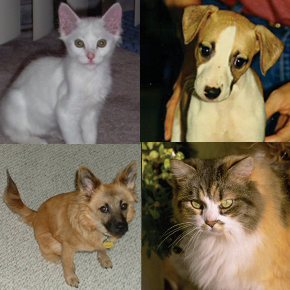|
Categorization:
recognition of discriminably different entities as members of the same category based on some internal representation
of the category.
Rakison & Oakes conducted a study
in 1993 on early
category and concept development where they found
emergence of categorization in infants as young as 3-4 months of age. The study revealed that infants can
form basic-level category
representations for visual patterns such as:
§ schematic
faces
§
geometric forms
§
computationally complex visual stimuli
They used the preferential-looking paradigm:
o when a baby is presented with
two different objects, they look more often at one than the other
o assumed that the baby is able
to find some difference between the two objects
o Habituation paradigm
o occurs when a baby looks so long at an item that they get bored of it and look away. If a baby habituates to
one object, and is then shown another object, it is assumed that the baby understands that the second object is different
if they are interested in it. If they look away from it, it is assumed they do not notice anything different between
it and the previously viewed object.
Used three-dimensional
toy replicas of cats and dogs rather than two-dimensional photographs

This study indicated evidence that the ability to categorize is present at birth.
Results of
the study reveal that 3- to 4-month-olds are more responsive to subtle feature changes in the familiarization stimuli
§ Infants may begin life with perceptual sensitivities that allow them to categorize objects
in their environment into various classes.
|
